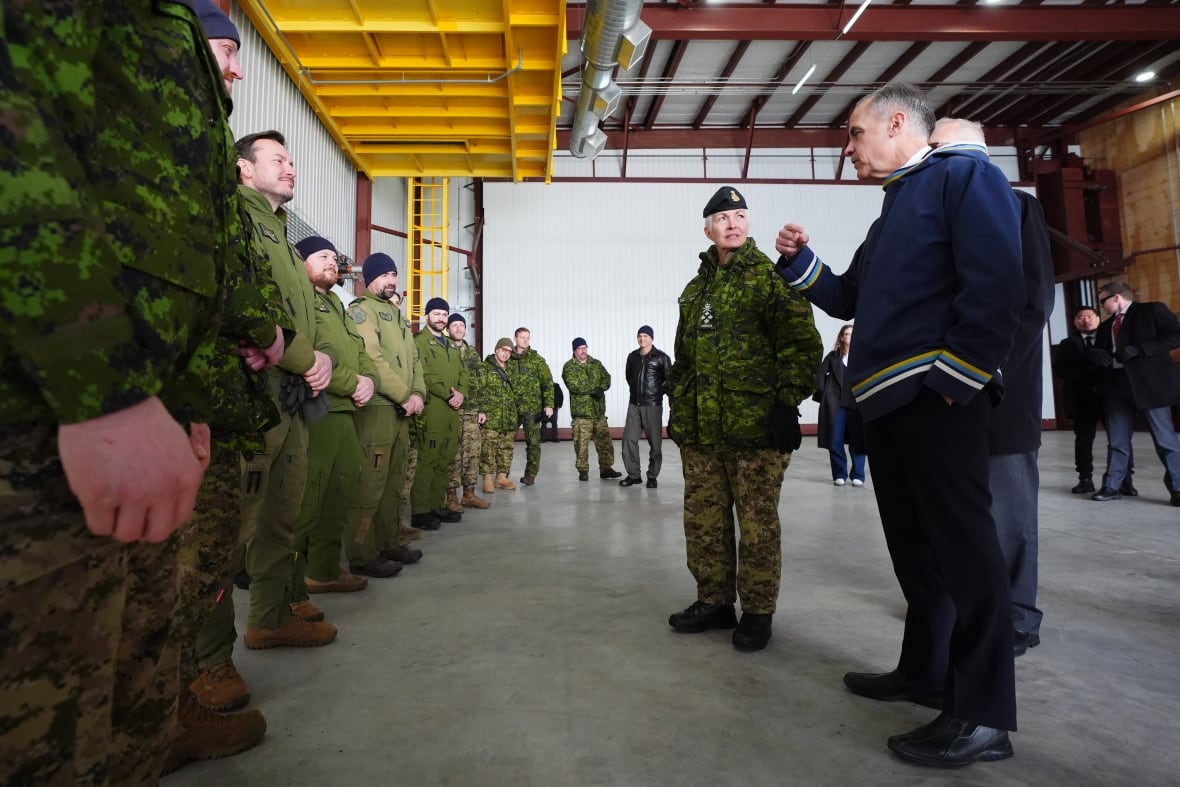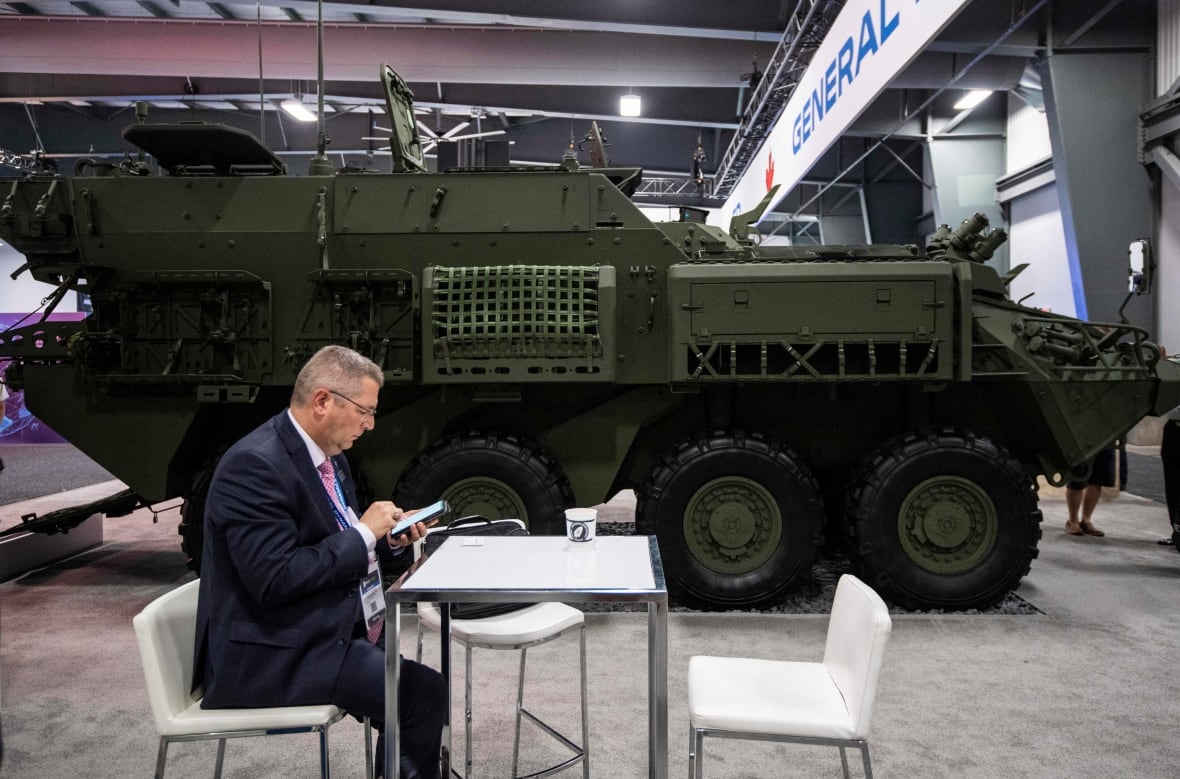
Prime Minister Mark Carney’s goal of hitting NATO’s defence spending target of two per cent of gross domestic product this year will be an uphill — nearly impossible — battle, say experts and critics.
An extra $8.7 billion is earmarked for defence spending by the Department of National Defence (DND) or other government departments, and $370 million for the Communications Security Establishment (CSE). Allies had been pushing Canada to meet NATO’s goal for nearly 20 years — but actually actually doing so became imperative with Donald Trump in the White House.
“Mark Carney’s words are right, but he’s gotta crack the whip here real quick,” said John Ball, a former Canadian defence industry executive for nearly four decades and now consultant.
NATO defines defence expenditures as payments made by a national government specifically to meet the needs of its armed forces, or those of allies and the alliance.
Conservative MP and defence critic James Bezan warns it will be difficult for procurement officials inside government to reverse a long-standing culture of risk aversion, deferred decisions and allowing billions of dollars in lapsed spending.
Canada and its NATO allies have agreed to a new target of spending five per cent of GDP on defence and security by 2035. Prime Minister Mark Carney says Canadians could feel the financial pinch toward the end of the decade.
“By the time we get back into Parliament and a budget is passed, we’re going to have half a year to spend money that the department won’t be able to shovel out the door,” Bezan said in an interview with CBC News.
He wonders if the government will just engage in a “game of creative accounting” to meet its NATO commitments on paper.
But some within the Canadian defence industry as well as DND and Public Services and Procurement Canada (PSPC) themselves point to existing mechanisms that can be leveraged to move quickly.
Those include the use of standing offers, supply arrangements and pre-qualified vendor lists, as well as strategic partnerships with defence companies identified as centres of excellence, bilateral partnerships with other countries and the U.S. Foreign Military Sales (FMS) program.
In situations that are truly time sensitive, the government can invoke a National Security Exception (NSE), Urgent Operational Requirements (UORs) or issue an Advance Contract Award Notice (ACAN). Although these have strict eligibility criteria and are not everyday tools.
“If the government can demonstrate to us that this is in the interest of national security and there is a limited availability from a competitive factor, we would be open to those types of procurement,” said Bezan. “But we can’t make a habit of using NSEs as a way to … get the equipment that we require for the Canadian Armed Forces.”

Carney outlined on June 9 the general areas for increased investment, but gave no specifics. The list included better compensation; health care and infrastructure for personnel; new equipment such as aircraft, armed vehicles and ammunition; expanding the Canadian Coast Guard and moving it under DND; repairing and maintaining existing ships, aircraft and other assets; and developing new drones and sensors to monitor the sea floor and the Arctic.
“We think it’s largely going to be made up of items that are already identified or some that have been languishing in the procurement pipeline or projects that were underfunded,” said Christyn Cianfarani, president and CEO of the Canadian Association of Defence and Security Industries (CADSI).
Spending at home
One way to spend faster would be to expand existing orders for armoured vehicles, ships and planes. For example, augmenting an existing contract for 360 light armoured vehicles from General Dynamics Land Systems in London, Ont. A company spokesperson says it would be able to quickly respond to contract amendment requests.
But if the government intends to buy equipment not already on order or in the inventory, Cianfarani argues DND and PSPC have to change their approach.
“There should not be a protracted procurement process,” she said. “Probably a good portion of that $9 billion could be spent on Canadian firms.”
The prime minister has explicitly stated that part of the goal is to build up the Canadian defence industry, while acknowledging that continuing to do business with allies, including the U.S., will remain necessary.
Cianfarani is far from alone in her concern over Canada’s procurement process, one of the main reasons critics argue spending $9 billion in less than a year is doubtful.
PSPC says its preference is for open, fair and competitive procurement. But many argue the process is overly long, and in some cases merely a box-ticking exercise where the winner is a foregone conclusion.
“Why did they do it? They did it to appease,” said Ball of those requests for proposals that already have a preferred candidate in mind.
Cianfarani said it’s frustrating for firms to spend millions on a bid for which they never had a real chance. She said it would be better to engage in “directed procurement” more often, as is done in other countries, where the government knows what it wants to invest in — and who the best suppliers are — and it then chooses them.
But Bezan and others warn of the risk of boondoggles increases if the rush to spend money also means hurried oversight.
“Talking about going to two per cent, and higher down the road, doesn’t mean we give licence to spend money frivolously,” said Bezan.
‘Deliberate urgency’
Those in the defence industry argue that they too want to make sure there’s value for money.
“I use the phrase ‘deliberate urgency,’ in that we need to think about how that money impacts the Canadian economic situation,” said Chris Pogue, a former Royal Canadian Air Force pilot and now president of Calian Defence and Space.
“I don’t think we should let urgency overcome smart procurement, but things can move quickly if we have a sense of the direction we want to go and the kind of capability we need.”

Pogue said capabilities around sovereignty need to be homegrown, such as equipment and supplies needed for operations in the Arctic.
An additional challenge is that most defence spending, at least on the capital side, is spent and accounted for over a number of years.
But a senior government official says they truly plan to increase defence spending by $9 billion before April. That said, the government continues to describe both the amount and the deadline as targets, not certainties.

